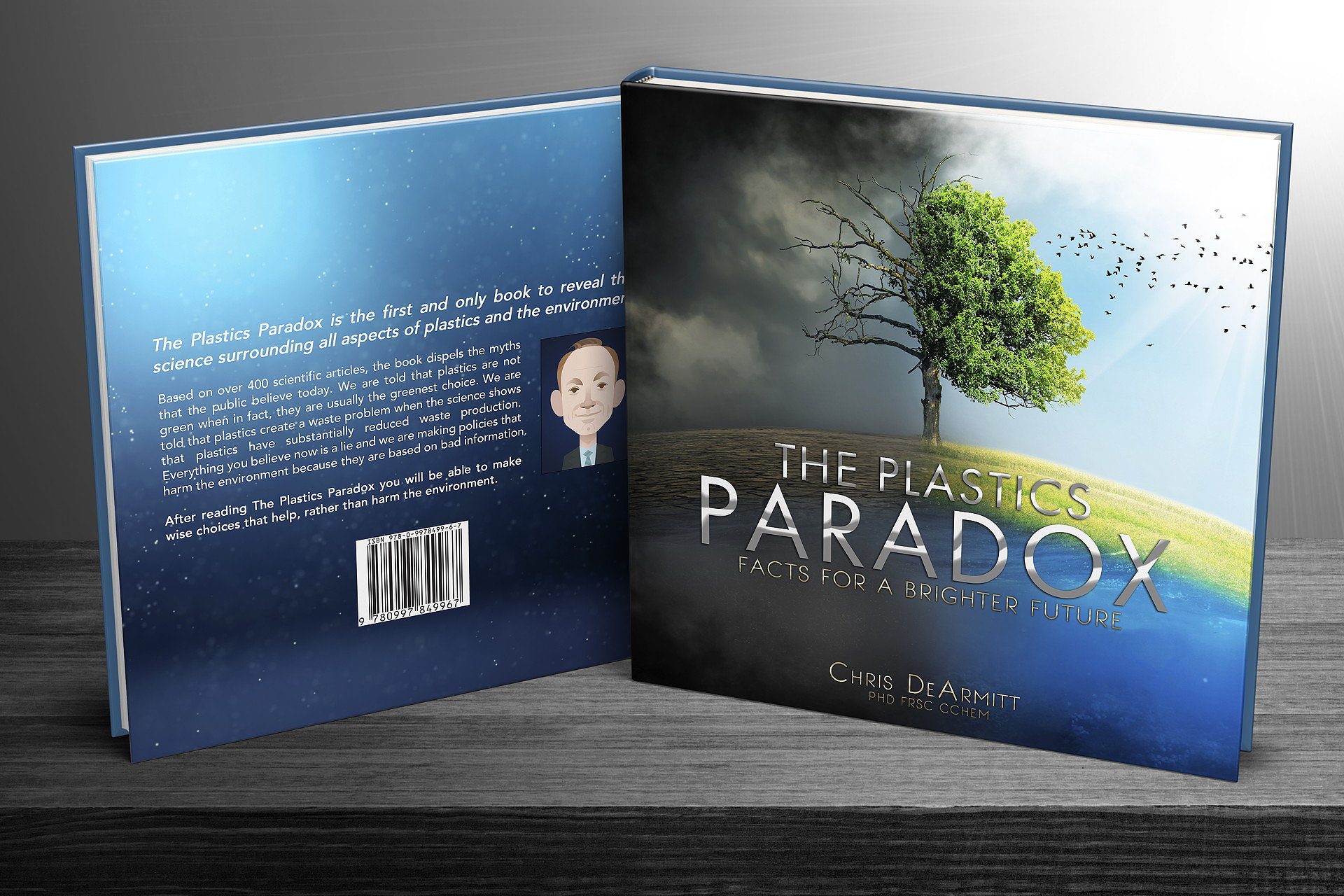PLASTICS & THE ENVIRONMENT
CARBON FOOTPRINT OF PLASTICS
evidence & perspective from the leading INDEPENDENT expert
The production of plastics produces carbon dioxide but the use of plastic can reduce greenhouse gas – see the data and get a new perspective on the carbon footprint of plastics.
Plastics and Carbon Dioxide
Prime Suspect or Falsely Accused?
A Waste 360 interview makes these claims:
“Made from a combination of chemicals and fossil fuels, plastic produces greenhouse gas emissions at every stage of its lifecycle,” said Judith Enck, president, Beyond Plastics. “To provide context, if plastic were a country, it would be the world’s fifth largest greenhouse gas emitter, beating out all but China, the U.S., India and Russia.”
Other organizations including the CIEL, WWF, WEF, Greepeace, and UNEP have leveled similar accusations. Are they right or is there more to the story?
Let us look at the scientific data and provide some context because looking at one figure in isolation can paint a distorted picture. If you believe that facts and our planet are more important that demonizing plastics, then please read on…

Accuracy of the Accusations
As a scientist, my first instinct is always to check to see whether the number given is actually true. After all, the accusations are not coming from professional, independent scientists. Instead the accusations often come from organizations created specifically to fight against plastics. There is a recent peer-reviewed study looking at global CO2 generation, how much is due to materials and how much of that is due to plastics.
“…plastics production in the U.S. is currently responsible for 232 million metric tons of greenhouse gases every year, the equivalent of 116.5 gigawatts of coal plants”
Looking at the peer-reviewed articles we see a reasonable match between the claimed “232 million metric tons of greenhouse gases” and the ~0.3 million tons tons calculated from the book Materials and the Environment, 3rd Edition by Michael F. Ashby. Now, let us look to see whether they are right to attack plastics in particular as a major cause of CO2 emissions.
The scientific study reported that global carbon dioxide emissions are about 40 Gigatons and materials are responsible for 11 Gigatons of that, which is ~25% of the total. So, materials are indeed a very significant contributor to emissions. Now let’s zoom in and see how much of the materials emissions are caused by plastics.
• CO2 from all materials combined 11.21 GTons/year
• CO2 from all metals 4.24 GTons/year
• CO2 from all ceramics (cement, lime, plaster) 2.85 GTons/year
• CO2 from paper 0.55 GTons/year
• CO2 from glass 0.36 GTons/year
• CO2 from plastics 1 GTon/year
Examining the data reveals that the manufacture of plastics is responsible for just 1-2% of emissions depending on the data source used. On this page we saw that plastics make up 0.5% of the materials we use and 0.5% of the waste we create, so perhaps it should come as no surprise that they also account for just 1-2% of carbon dioxide. See Sustainable Materials with Both Eyes Open.
It should be clear that anyone genuinely concerned about carbon dioxide and warming would not be targeting plastics as the prime cause. based on the data, anyone who was genuinely worried about carbon dioxide should be much more worried about metals and ceramics than plastic.
It appears that, once again, organizations who make a living from demonizing plastic have shown their true colors. The fact that they focus on carbon dioxide from plastics without any mention of any of the main causes of carbon dioxide shows that their goal is not to protect the environment. Their relentless online barrage is distracting us from the real problems and from solutions that actually work. While the public and politicians obsess over plastic, 98-99% of our CO2 problem goes ignored and unaddressed.
Plastics Alternatives & Carbon Dioxide
The baseless attacks on plastics do not just distract us from the real, major dangers, they also encourage us to make choices that are proven to increase harm to the environment. As shown in The Plastics Paradox book and website, there are 28 lifecycle studies on plastic bags and they all show that replacing the plastic bag increases materials use, increases waste, increases carbon dioxide emissions and increases overall harm. Lifecycle analyses of other common items come to the same conclusion. Replacing plastic containers with metal, paper, cotton or glass massively increases carbon dioxide produced. It can be misleading to look at one or two products or one or two lifecycle analyses, so Imperial College London, a well-respected university in the UK, reviewed 73 LCA studies to ensure solid conclusions could be drawn. This is what they found:
“If all plastic bottles used globally were made from glass instead, the additional carbon emissions would be equivalent to 22 large coal- fired power plants producing enough electricity for a third of the UK.”
“On average over current food packaging, replacing plastic packaging with alternatives, would increase the weight of the packaging by 3.6 times, the energy use by 2.2 times, and the carbon dioxide emissions by 2.7%…”
Here is a statement from another study:
“Substitution of plastic products by other materials will in most cases increase the consumption of energy and the emission of greenhouse gases.”
The studies mentioned are typical of LCA conclusions for most items. Replacing plastics is scientifically proven to increase harm including carbon dioxide. That means that we need to choose what’s most important to us, protecting the environment or demonizing plastics.
As mentioned, these studies are not outliers. Study after study concluded that plastic replacements increase harm and specifically carbon dioxide emissions. Anyone with access to Google can find these scientific studies for free online and yet somehow the so-called “environmental groups” have either not looked (in which case they are incompetent) or have intentionally misrepresented the facts (in which case they are dishonest). A new, very comprehensive study by McKinsey agrees with those previous studies cited here and in The Plastics Paradox book. They found that plastics are almost always greener and that replacement materials create much more carbon dioxide.
“Plastic solutions provided lower GHG emissions in 13 of the 14 applications where plastic was compared with alternative materials.”
“In the 13 applications for which plastic has lower emissions, the benefit was 10 to 90 percent lower GHG emissions than the next-best alternatives”
What is the Net Effect of Plastic Materials on Carbon Dioxide?
We all know that every story has two sides. That is why justice is represented by a lady holding scales to weigh the evidence on both sides. We have heard about the impact of plastic on carbon dioxide, but the groups writing articles on the topic only present one side of the story. If such organizations were truly interested in truth and doing what is best for the environment, then they would show all of the evidence. Instead they choose to hide any pros and present only cons. Why do they do that? There are books published by “environmental group” defectors in which they tell us that these groups are often acting out of greed, abandoning both virtue and the environment long ago.
Do plastics have any positive effects on CO2?
It is well established that plastics massively reduce the use of oil and the creation of carbon dioxide via three main routes.
1. Plastics make cars and other vehicles lighter, so less oil is needed for fuel
2. Plastics insulate our homes and other buildings, thereby lowering the amount of heating oil, coal, gas and electricity (also from fossil fuel)
3. Plastics extend the shelf-life of food, preventing spoilage and reducing the amount of food needed. As food production is a huge contributor to CO2, plastic packaging has a major positive impact.
How large are these effects and are they significant compared to the carbon dioxide created during the manufacture of plastics? Let’s take a closer look to work out the net carbon footprint of plastic materials.

As discussed in the video The Great Plastics Distraction – Part 2, plastics have made cars and other vehicles so much lighter, that the amount of oil used to make the plastics is less than the amount of oil saved. It turns out that the net effect of plastics is to reduce oil consumption. How does that relate to carbon dioxide? The use of oil as a fuel creates carbon dioxide emissions when the fuel is burnt in the engine. So, the net effect of plastics is to reduce oil usage and carbon dioxide creation. One reason for that is that ~85% of oil is burnt, mainly for transportation and heating in comparison to just ~5% of oil used to manufacture plastics. Plastics reduce that 85% by a significant amount, which outweighs the 5%.
We just mentioned the protection of food using plastic packaging. Let’s look at the numbers there. The global yearly emission of CO2 from food production is 17 Gt (billion tonnes) whereas the carbon dioxide from plastics production is 1 Gt. Of that 1 Gt, 40% is for packaging and 40% of that 40% is for food packaging. So, the annual CO2 emissions from plastic food packaging are 0.16 Gt, which is ~100x less than the emissions from food production. This means that if plastic packaging saves 1 in 100 food items shipped from damage, then the packaging is CO2 neutral, meaning that it saved as much CO2 as it took to make the packaging. Similarly, if that packaging extended the shelf-life of the food by 1/100th, then it breaks even. In fact, we know that the extension of shelf-life is far greater than 0.5%, for example, shrink-wrapped cucumbers last 200-300% longer. As 30% of food is discarded uneaten, the carbon dioxide savings and reduction in landfill usage can be substantial.
Conclusions about Plastic and Carbon Dioxide
Stories online tell us that plastics are a major contributor to carbon dioxide creation but when we take a closer look, we find that’s all they are – stories and fictional stories at that. The peer-reviewed scientific evidence reveals that:
• Materials creation is responsible for ~25% of CO2
• Plastics generate 2% of CO2, which is less than concrete, metals, glass, paper and other common materials
• Replacing plastic massively increases the emission of carbon dioxide
• Focusing on plastic is not justified by the data and is instead a dangerous distraction from the true causes
If we want a brighter future, then we need to start making sound choices based on solid evidence because the current approach based on emotion and gossip is actually increasing harm. To make wise choices we need to look at the peer-reviewed evidence from professional independent scientists and start ignoring greedy self-interest groups who mislead us to line their own pockets.
Once again, we see that the demonization of plastics is unwarranted and distracts the public from the real issues. Want to know more facts about plastics and the environment? If you really care about our future, the read The Plastics Paradox book, which is free here. If you only have 20 minutes to spare then watch The Great Plastics Distraction video on YouTube which will shock you to your core.
“you can be for the environment, or against plastics, but not both”.

Dr. Chris DeArmitt is a renowned independent scientist and keynote speaker with decades of experience solving tough technical challenges for some of the world’s leading companies. He is a Fellow of the Royal Society of Chemistry and Fellow of the Institute of Materials, Minerals and Mining. He is also a Chartered Chemist with a long list of publications, presentations and patents to his name. His review of the science around plastics and the environment was performed unpaid to preserve impartiality.
Income 2024 : ~ 60% NAICS 424690 Chemicals, ~30% NAICS 423990 Durable Goods, 10% NAICS 541110 Legal, 0% NAICS 325211 Plastics Composition varies over time



